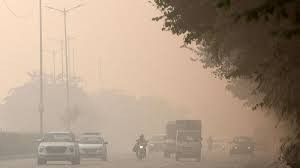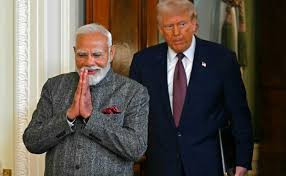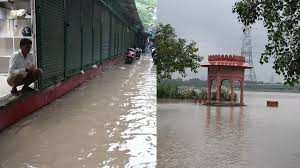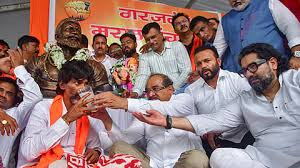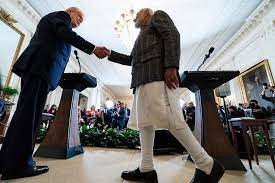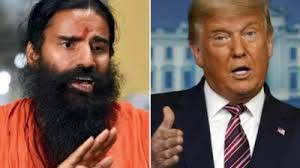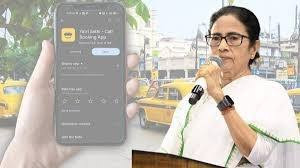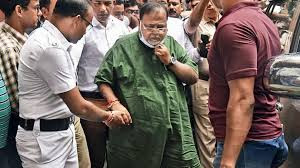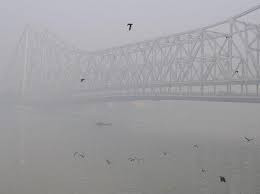“US Tariffs on India Double to 50 Percent Amid Rejection of Pressure, Escalating Diplomatic Strain”
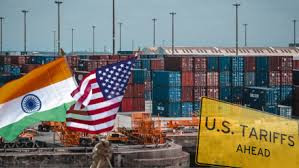
IIE DIGITAL DESK : The August 27, 2025, tariffs on Indian goods entering the United States officially doubled, surging from 25 percent to a formidable 50 percent. This latest escalation stems from a punitive policy move by the Trump administration in response to India’s continued purchases of discounted Russian oil—behavior Washington interprets as indirectly supporting Russia’s war in Ukraine—a stance India firmly rejects as unjust and strategically autonomous .
The evolution of this crisis spans several months. Initially, the two countries pursued a landmark trade agreement in early 2025 aimed at boosting bilateral trade to $500 billion by 2030. Negotiations featured multiple high-level visits, including one by Prime Minister Modi to Washington and reciprocal U.S. diplomatic outreach. Momentum appeared to build until controversy erupted over a lack of progress on sensitive issues like Indian agricultural and dairy market access, culminating in a June collapse of negotiations. A noteworthy moment came when PM Modi declined a dinner invitation from President Trump, signaling New Delhi’s resolve to resist pressure-driven deal-making .
On July 31, President Trump announced a “reciprocal” 25 percent tariff on Indian imports, effective in early August, and warned of further penalties tied to India’s oil imports from Russia. The first tranche of tariffs was enacted on August 7. India immediately rejected the move, defending its energy security needs and accusing the U.S. of hypocrisy, given its own continued trade with Russia. India’s External Affairs Minister underscored that Western nations maintained energy ties with Russia while penalizing New Delhi for doing the same.
The second wave of tariffs took effect on August 27, triggered by a formal U.S. Department of Homeland Security notification that stamped the new tariffs into force at 12:01 a.m. EDT (9:31 a.m. IST). Exceptions were provided only for in-transit shipments meeting strict documentation requirements by mid-September .
The economic fallout has been swift. The Indian rupee reached new lows, while benchmark indices Sensex and Nifty dipped sharply, signaling market anxiety . Exporters across textiles, gems, jewelry, leather, marine products, engineering goods, and seafood now face steep duties, while sensitive domains like electronics, semiconductors, pharmaceuticals, steel, aluminum, and automobiles remain exempt—for now.
Industry groups and political actors have raised the alarm. The Federation of Indian Export Organisations warns of lost competitiveness, while textile exporters in major hubs fear that a 50 percent levy will essentially shut them out of the U.S. market . The Congress party, led by Mallikarjun Kharge, denounces the tariff as a “MAHA headache,” forecasting losses of approximately ₹2.17 lakh crore and accusing the government of failing to shield labor-intensive sectors and farmers .
In response, the Indian government is deploying countermeasures to blunt the blow. These include cuts in Goods and Services Tax (GST), economic reforms, strengthening export promotion schemes, leveraging RBI support, and accelerating free trade negotiations with other regions . Amid the turmoil, former NITI Aayog CEO Amitabh Kant framed the crisis as a “once-in-a-generation” opportunity for India to undertake transformational reforms—an “Agneepath moment” toward self-reliant growth.
Beyond economics, the implications for strategic relations are profound. Observers caution that the deepest bond between the U.S. and India in decades is now at risk, with trust eroded and the Quad framework potentially undermined. India’s multipolar diplomacy—anchored by balancing ties with the U.S., Russia, and China—could tilt further toward the latter two. Nevertheless, diplomatic channels remain open, with speculation about a possible Trump–Modi meeting during the upcoming UN General Assembly offering a glimmer of hope for resolution .
The doubling of tariffs to 50 percent on August 27 has ignited a multifaceted crisis—economic shockwaves reverberate across export sectors, domestic industries brace for disruption, political responses in India grow sharper, and the strategic equilibrium between two democratic giants becomes increasingly fragile.
You might also like!


